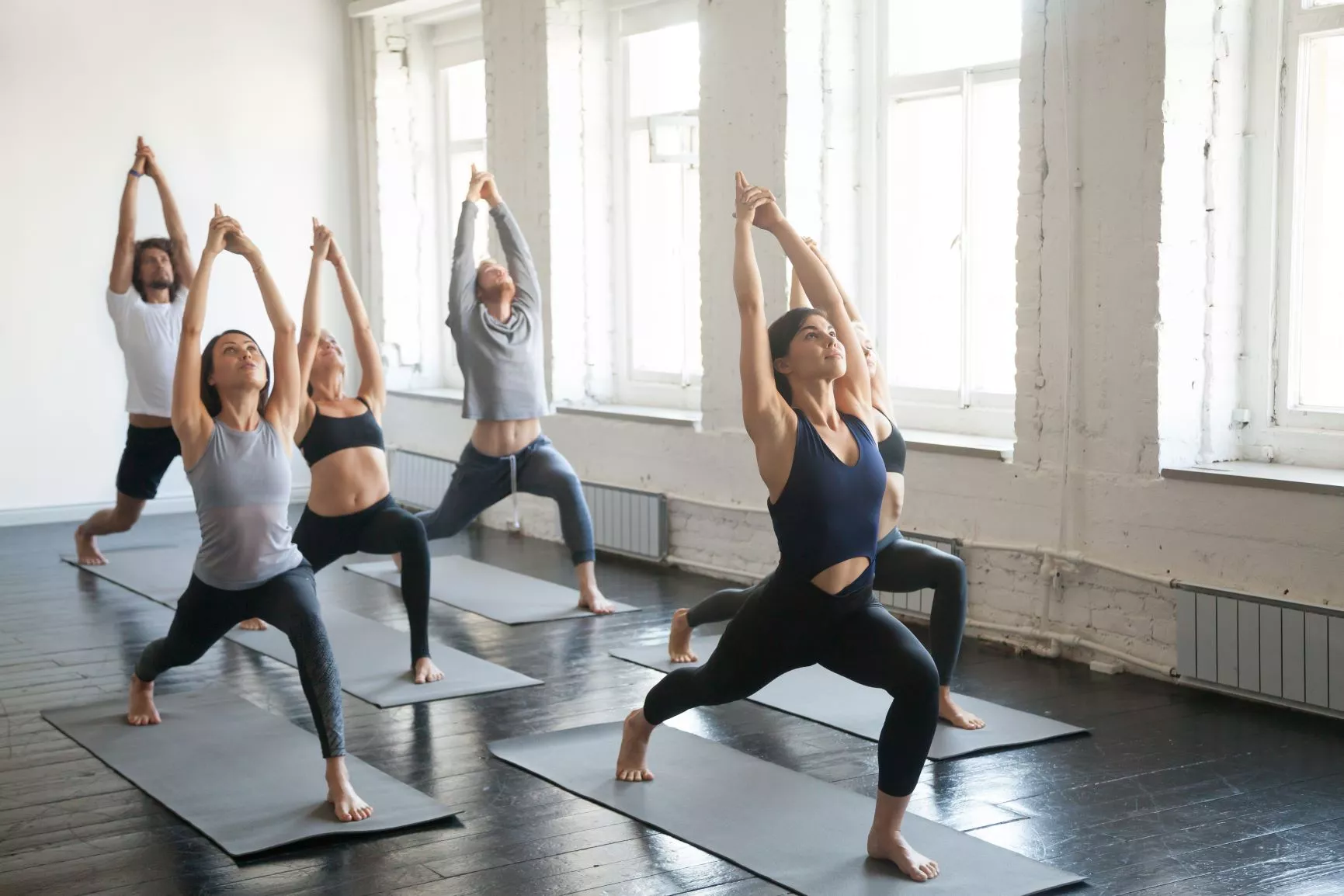
You have this beautiful space. The lighting is perfect, the energy is calm, and your yoga teacher team is fantastic. But you look at your class schedule, and you see too many empty spots; you’re missing out on connecting with more people.
You know if people just found you, they would love your studio. This is a common feeling for so many studio owners, and you are not alone. The answer is learning how to do SEO for yoga studios.
You built a community inside your walls, but people now start their search for community online. They pull out their phones and type yoga classes near me into Google search. The question is, does your yoga studio appear in those relevant searches?
Understanding how to do SEO for yoga studios is what bridges the gap between those online searchers and the front door of your amazing studio. We’ll break down how to get your studio found by potential clients who are actively looking for a place just like yours.
Why SEO Matters for Your Yoga Studio
You might hear the term SEO, or engine optimization, and think it sounds complicated or technical. Let’s break it down. It is the process of helping search engines like Google understand what your studio offers so they can show your yoga website to the right people.
For a local business like a yoga studio, this is everything. Your potential students are in your city, your neighborhood, maybe even on your street. When they search, Google tries to give them the most relevant local results, and SEO is how you tell Google’s algorithm, Hey, I’m right here.
This is different from paying for ads, another form of digital marketing. Ads are great, but they stop working the moment you stop paying. Good yoga SEO builds on itself over time, creating a steady stream of interested students that find you for free. Think of it as building a foundation for your studio’s long-term growth and improving your online presence.
The Foundation: Nailing Your Local SEO
Before we talk about your website or content marketing, we need to focus where most of your students will find you: local search results. This is the map pack and the list of businesses that often show up at the top of a search page. Getting your studio in that spot is a game-changer.
This part of SEO improves the visibility of local businesses more than any other. Getting it right means you show up when people search in your immediate area. This is where your SEO journey should start to bring in more local traffic.
Claim and Optimize Your Google Business Profile
Your Google Business Profile (GBP) is your most important asset for local SEO. It is the free business profile listing from Google that feeds information to the search results and Google Maps. If you do nothing else, this is one of the most easy ways to get started.
First, make sure your business name, address, and phone number (known as your NAP) are perfectly correct; even a small inconsistency can confuse search engines. Then, choose the right categories for your business profile. Yoga Studio is a must, but you can also add Pilates Studio, Wellness Center, or Meditation Center if they apply.
Take time to write a good description for your profile listing. Talk about your philosophy, the styles of yoga you offer, and what makes your studio special. Lastly, upload plenty of high-quality photos to your Google Business account. Show off your clean, welcoming space, pictures of yoga classes in session (with permission.), and smiling photos of your instructors.
Get More Positive Reviews
Reviews are a powerful tool. They not only help your business profile listing rank higher in local search results but also build trust with potential students. Think about it, would you try a new restaurant with zero reviews or one with dozens of glowing comments from other Google users?
Getting reviews can feel awkward, but it doesn’t have to be. Simply ask your happiest, most loyal students if they would be willing to leave a review. You can send them a direct link in an email or create a small card with a QR code they can scan at the front desk after a class.
Just as important as getting reviews is responding to them. Thank people for their positive feedback. And if you get a negative review, respond politely and professionally, addressing their concerns. A thoughtful response can often win over more people than the negative review itself.
Build Local Citations
What are citations? They are mentions of your business’s name, address, and phone number hours on other websites. Think of websites like Yelp, Apple Maps, and other local or industry-specific directories. Each consistent citation is like a vote of confidence for your business in Google’s eyes.
It confirms that you are a legitimate local business at the address you claim. The key here is consistency. Make sure your NAP is identical everywhere your business profile listing appears.
You can use a service to find and manage local directory listings or just start with the most obvious ones. This practice helps websites link to you, strengthening your authority and local relevance. This is a foundational step in yoga studio SEO that helps people discover your physical location.
How to do SEO for Yoga Studios? On-Page Strategies
Once your local foundation is solid, it is time to look at your own website. On-page SEO refers to the changes you make on your site’s pages to help them rank better in Google search. This is how you target specific searches beyond just “yoga near me.”
Your yoga website is your digital studio. It needs to be welcoming, easy to understand, and helpful for both visitors and search engines. A little work here goes a long way toward a better user experience.
Keyword Research for Yoga Studios
Keywords are the words and phrases people type into search engines. You need to know what your potential students are searching for. This is not about guesswork; it’s about understanding what terms people search when looking for a yoga studio.
Start with the basics. These are called head terms and are often competitive but important. Here are a few examples:
- yoga classes [your city]
- beginners yoga [your neighborhood]
- hot yoga studio
- vinyasa flow classes
- prenatal yoga [your city]
- restorative yoga near me
You should also focus on long-tail keywords. These are longer, more specific phrases that often have less competition and a higher conversion rate. These keywords reach people who have a very specific need.
| Keyword Type | Example | Intent |
|---|---|---|
| Head Term | hot yoga Austin | Broad search, looking for options. |
| Long-Tail Keyword | gentle restorative yoga for back pain near me | Specific need, higher intent to join. |
| Local Keyword | yoga studio South Lamar | Geographically focused, ready to visit. |
You can find more ideas just by typing these into Google and seeing what autocomplete suggestions pop up. Tools like Google Analytics and Google Search Console can show you what keywords people are already using to find your site. Using a mix of these keywords throughout your content helps you appear in more relevant searches.
Optimize Your Website Pages
Now you need to use those keywords on your website. This does not mean stuffing keywords everywhere; Google views this as spammy. You need to place them naturally where they make sense.
Look at your most important pages: your homepage, class schedule, pricing page, and about page. Each page should have a clear purpose and a primary target keyword. For example, your homepage might target yoga studio in [your city], while a specific class page might target yin yoga classes.
The most important places to put your keywords are in the page’s title tag and meta description. Also, use them in the main headings on the page (H1, H2s). And remember to add internal links between your pages to help both users and search engines navigate your site. This encourages users to stay on your site longer, a positive signal to Google.
Content is Your Best Friend
A website that only lists your schedule and prices is a missed opportunity for higher search rankings. Content marketing is how you build authority, answer student questions, and attract a wider audience. A blog is the perfect way to do this.
Consistent, helpful content shows Google that you are an expert in your field. This helps your entire website rank better. It’s a long-term strategy that pays off in sustained organic traffic and new clients.
Creating a Yoga Blog
Do not let the idea of a blog intimidate you. As a yoga teacher or studio owner, you have plenty to talk about. The goal is to write about topics your potential students are interested in.
Here are a few blog posts ideas to get you started:
- The Top 5 Benefits of a Daily Yoga Practice.
- What to Wear to Your First Hot Yoga Class.
- A Beginner’s Guide to Vinyasa Flow.
- How Yoga Can Help with Back Pain.
- Meet Our New Instructor: [Name].
- Understanding the Different Types of Yoga We Offer.
- 3 Breathing Exercises to Calm Your Mind.
Each of these posts targets a question someone might be searching for. When they find your helpful article, they also find your yoga studio. This soft introduction builds trust before they even step on a mat, which helps your content ranking.
Create Location-Specific Pages
If your yoga studio is in a large city with distinct neighborhoods, or if you serve several surrounding towns, creating pages for those locations can be very effective. This is a powerful local SEO tactic many businesses use. A great guide from Moz explains this in more detail.
For example, you could have a page titled “Yoga Classes in Downtown [Your City]” or “Your Go-To Yoga Studio in [Neighboring Town]”. On this page, you can talk about how convenient your studio is for people in that specific area and mention nearby landmarks. Include testimonials from students from that area and an embedded Google Map to make it even more locally relevant.
This strategy helps you show up for very targeted local searches, capturing traffic from people who want a studio in their immediate vicinity. These pages directly support your overall studio SEO efforts. This helps you capture people searching for yoga classes near their work or home.
Don’t Forget Technical SEO Basics
This sounds more intimidating than it is, but it’s crucial for user experience. You do not need to be a web developer. But there are a couple of technical items you need to pay attention to because they have a big impact on whether people, and Google, like your site.
Think of this as making sure the foundation of your house is solid. You can have beautiful furniture, but if the floor is crumbling, nobody will want to come inside. Good technical health underpins your entire SEO strategy.
Make Your Website Mobile-Friendly
Look around the next time you are at a coffee shop. Most people are on their phones. That is how they are searching for a yoga studio, too.
If your website is hard to use on small screens and mobile devices, they will leave and go to your competitor’s site. Google knows this, so it prioritizes mobile-friendly websites in its search results through mobile-first indexing. Your site must look and work great on a phone.
This means you need to incorporate responsive design. Responsive design allows your website to automatically adjust to fit any screen size. You can check how your site performs with Google’s Mobile-Friendly Test to see if you need to incorporate responsive design updates.
Improve Your Site Speed
Have you ever clicked on a website and waited, and waited, for it to load? It is frustrating, and users will not wait long. A slow website is a major reason people leave, hurting your conversion rate.
Site speed is a confirmed ranking factor. A faster site gives users a better experience and can help you rank higher. One of the biggest culprits of slow sites is large image files.
Make sure you compress images before you upload them to your website. You can check your site’s speed using Google’s PageSpeed Insights tool to identify what you need to fix. Taking the time to optimize speed is a simple change that makes a huge difference for everyone visiting your site.
Conclusion
This might feel like a lot of information, but you do not have to do it all at once. Start with the most important task: your Google Business Profile. Get that set up and optimized, then start asking for reviews from your community.
From there, you can move on to optimizing your website’s pages and eventually start a content marketing plan with blog posts. SEO is not a one-time fix; it is an ongoing practice, just like yoga. But by consistently showing up and putting in the work, you will learn that figuring out how to do SEO for yoga studios is the most sustainable way to grow your community and fill your yoga classes.
You have already created a wonderful space for people to practice. Now it is time to let your entire neighborhood find it. Using these yoga SEO strategies will help connect the people searching for a studio with the amazing experience you offer.












